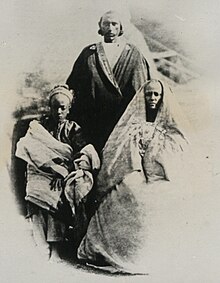Post by Kiarani on Feb 27, 2017 21:08:02 GMT 4
The origins and prehistory of the Oromo people is unclear, in part because Oromo people lacked a written script, relied on oral traditions and did not write their own history prior to the 16th-century.[6][20] Older and subsequent colonial era documents mention Oromo people as Galla, but it was written by members of ethnic groups or missionaries generally hostile and at war with them. Anthropologists and historians such as Herbert S. Lewis consider these indirect literature as "full of distortions, biases and misunderstandings".[6][20][21]
Historical linguistics and comparative ethnology studies suggest that the Oromo people likely originated around the lakes Shamo (Chamo) and Stephanie (Chew Bahir).[10][21] They are Cushitic people who have inhabited the East and Northeast Africa from at least the early 1st millennium. The traditional view, but one not universally accepted, is that the Oromo occupied most of the Horn of Africa and the coast of Gulf of Aden in the 10th century CE, until the Somali people arrived and pushed them out.[22][23]
The first verifiable record mentioning the Oromo people by a European cartographer is in the map of Italian Fra Mauro in 1460, which uses the term "Galla".[10] The map was likely drawn after consultations with Ethiopian monks who visited Italy in 1441. It is a term for a river and a forest, as well as for the pastoral people established in the highlands of southern Ethiopia.[24] This historical information, according to Mohammed Hassen, is consistent with the written and oral traditions of the Amhara people which too refer to the Oromo people as Galla. The historical evidence therefore suggests that the Oromo people were already established in southern highlands in or before the 15th century, and that at least some Oromo people were peacefully interacting or in conflict with other Ethiopian ethnic groups.[24]https://en.wikipedia.org/wiki/Oromo_people
Historical linguistics and comparative ethnology studies suggest that the Oromo people likely originated around the lakes Shamo (Chamo) and Stephanie (Chew Bahir).[10][21] They are Cushitic people who have inhabited the East and Northeast Africa from at least the early 1st millennium. The traditional view, but one not universally accepted, is that the Oromo occupied most of the Horn of Africa and the coast of Gulf of Aden in the 10th century CE, until the Somali people arrived and pushed them out.[22][23]
The first verifiable record mentioning the Oromo people by a European cartographer is in the map of Italian Fra Mauro in 1460, which uses the term "Galla".[10] The map was likely drawn after consultations with Ethiopian monks who visited Italy in 1441. It is a term for a river and a forest, as well as for the pastoral people established in the highlands of southern Ethiopia.[24] This historical information, according to Mohammed Hassen, is consistent with the written and oral traditions of the Amhara people which too refer to the Oromo people as Galla. The historical evidence therefore suggests that the Oromo people were already established in southern highlands in or before the 15th century, and that at least some Oromo people were peacefully interacting or in conflict with other Ethiopian ethnic groups.[24]https://en.wikipedia.org/wiki/Oromo_people






